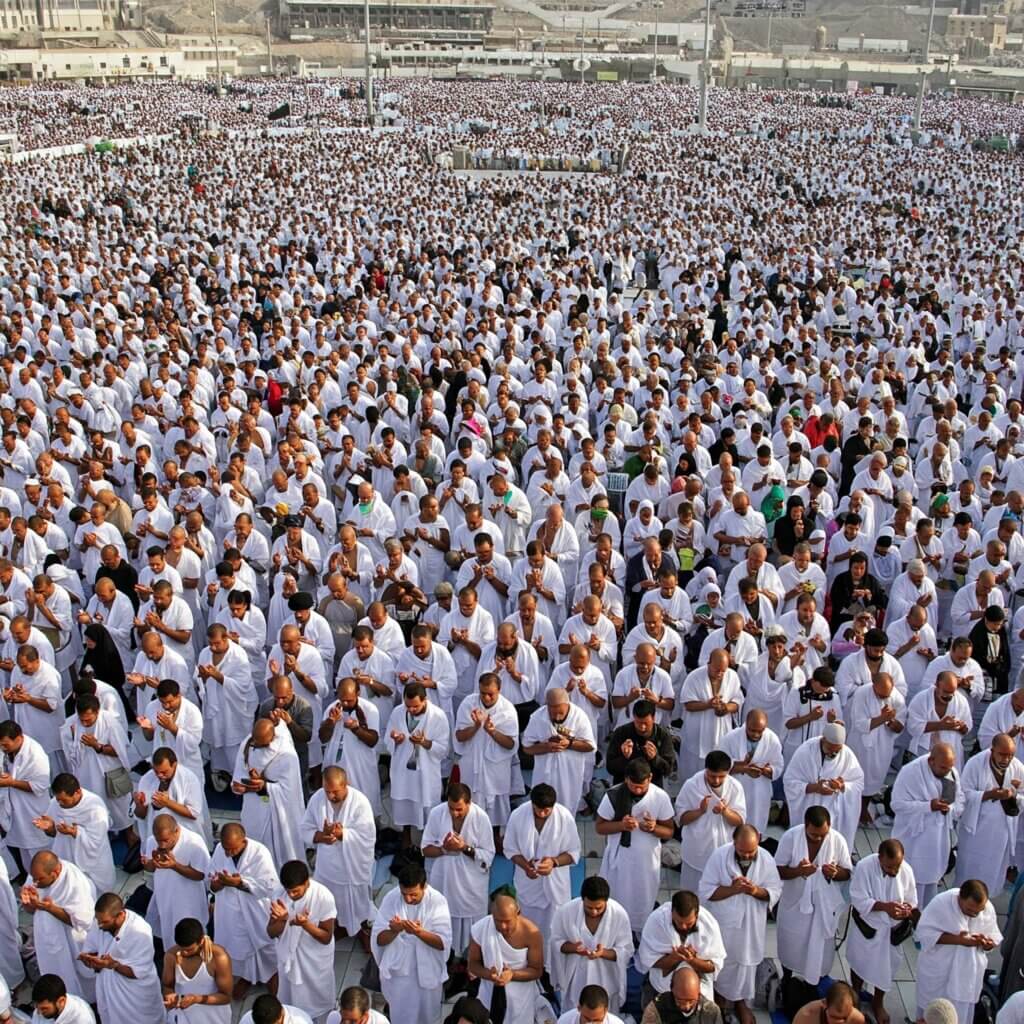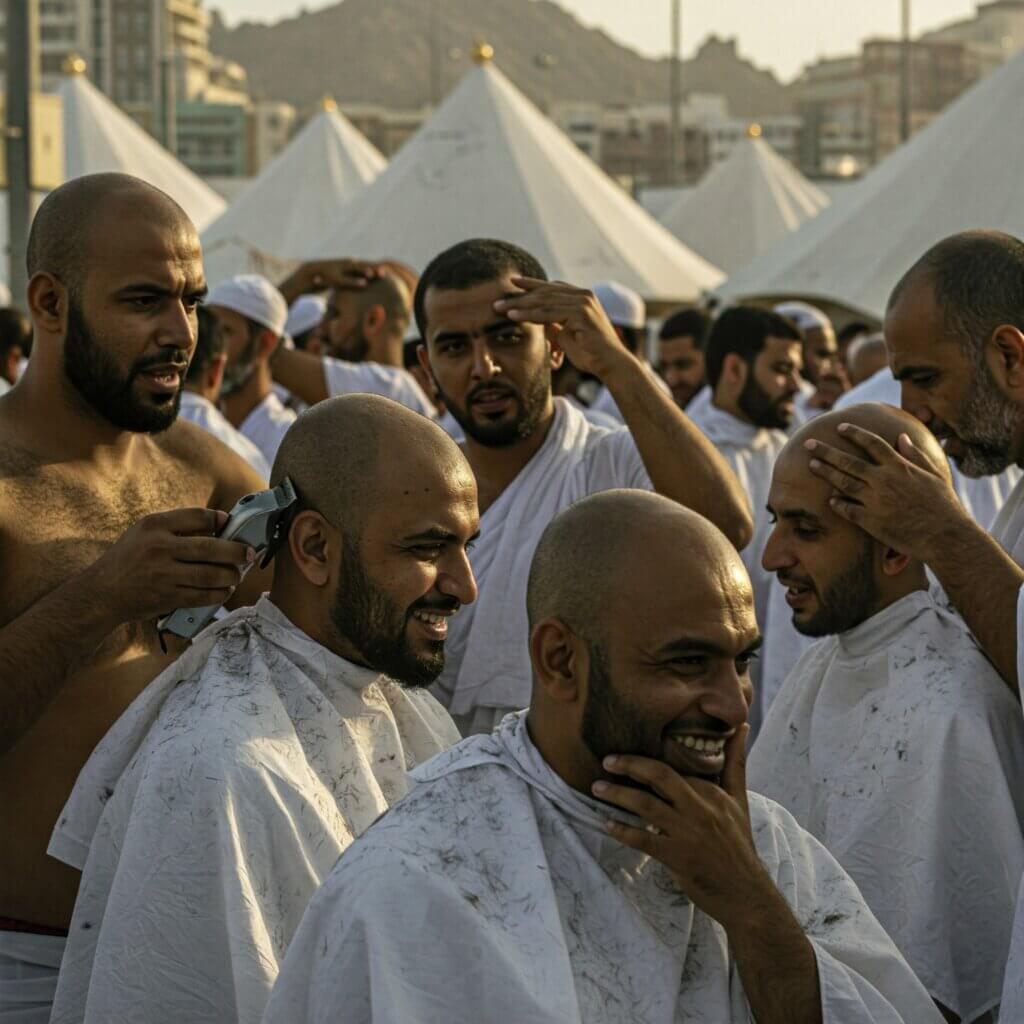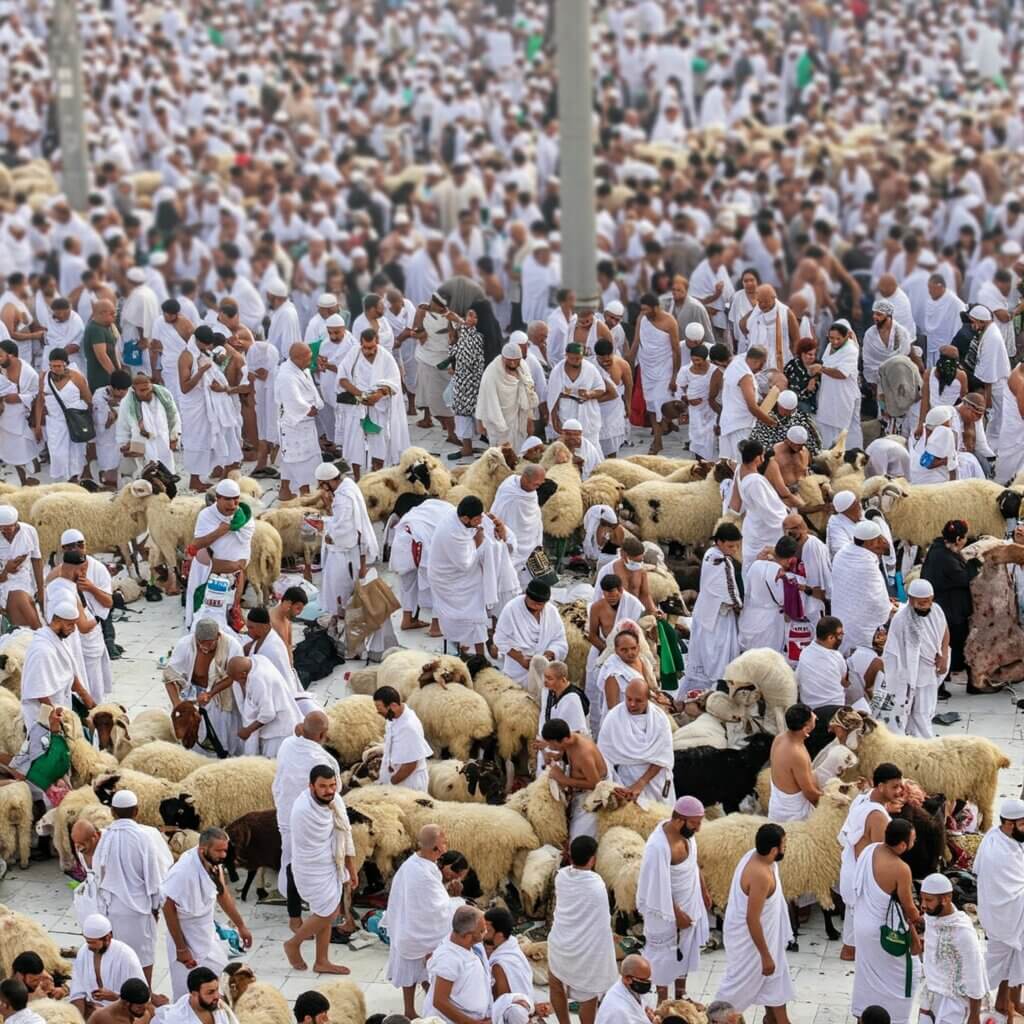The Rites of Hajj Step by Step: A Spiritual Journey Embodying Monotheism
Hajj is the fifth pillar of Islam, and an obligatory pilgrimage for those who are able to undertake it. It is a profound spiritual journey that transcends mere performance of rituals to touch the essence of faith and unite the hearts of Muslims from all corners of the earth. Over a few short days, the pilgrim follows the footsteps of the prophets, embodying the story of Islam since its inception. In this article, we will explore the rites of Hajj step by step.
1. Ihram (Intention and Consecration):
- Time: Begins before heading to Mecca from the designated Miqat (station).
- Steps:
- Performing Ghusl (ritual bath) and applying perfume (for men).
- Wearing the white, unstitched garments of Ihram for men, and concealing clothing for women.
- Making the intention (Niyyah) to enter Ihram for Hajj, Umrah, or both.
- Reciting the Talbiyah: “Labbaik Allahumma Labbaik, Labbaik La Shareeka Laka Labbaik, Innal Hamda Wan Ni’mata Laka Wal Mulk, La Shareeka Lak” (Here I am, O Allah, here I am. Here I am, You have no partner, here I am.1 Indeed, all praise, grace, and sovereignty belong to You.2 You have no partner).
2. Tawaf around the Kaaba (Tawaf al-Qudum – Arrival Tawaf):
- Time: Upon arrival in Mecca.
- Steps:
- Proceeding to the Masjid al-Haram (the Sacred Mosque).
- Starting from the Black Stone (or aligning with it if unable to reach it).
- Circumambulating the Kaaba seven times counter-clockwise, keeping the Kaaba to the left.
- Performing Raml (brisk walking) in the first three rounds for men (during Tawaf al-Qudum and Umrah).
- Covering the right shoulder and exposing the left (Idtiba’) for men during Tawaf.
- Touching or gesturing towards the Rukn al-Yamani (the Yemeni Corner).
- Supplicating and praying during Tawaf.
- Offering two Rak’ahs (units of prayer) behind the Maqam Ibrahim (the Station of Abraham) after completing Tawaf.

3. Sa’i between Safa and Marwa:
- Time: After completing Tawaf al-Qudum (or Umrah).
- Steps:
- Ascending Mount Safa, facing the Kaaba, and supplicating.
- Beginning the Sa’i (walking or running) from Safa to Marwa for seven rounds.
- Walking briskly between the two green markers (Harwalah) for men.
- Supplicating and praying during Sa’i.
- Concluding the seventh round at Mount Marwa.
4. Heading to Mina and Staying Overnight (Day of Tarwiyah – 8th of Dhul Hijjah):
- Time: Morning of the 8th of Dhul Hijjah.
- Steps:
- Moving from Mecca to Mina.
- Staying in Mina until the morning of the 9th.
- Performing the five daily prayers in their shortened forms (Qasr) without combining them.
5. Standing at Arafat (The Greatest Pillar – 9th of Dhul Hijjah):
- Time: From noon (Zawal) until sunset on the 9th of Dhul Hijjah.
- Steps:
- Proceeding from Mina to Arafat after sunrise.
- Being present anywhere within the boundaries of Arafat (except Wadi Urana).
- Supplicating, praying, seeking forgiveness, and repenting to Allah with humility and persistence.
- Listening to the sermon of Arafat (if possible).
- Offering the Dhuhr (noon) and Asr (afternoon) prayers combined and shortened at the time of Dhuhr.
6. Moving from Arafat to Muzdalifah and Staying Overnight (Night of the 10th of Dhul Hijjah):
- Time: After sunset on the 9th of Dhul Hijjah.
- Steps:
- Moving calmly and peacefully from Arafat to Muzdalifah.
- Offering the Maghrib (sunset) and Isha (night) prayers combined and shortened upon arrival in Muzdalifah.
- Staying overnight in Muzdalifah until dawn of the 10th.
- Collecting small pebbles for the stoning of the Jamarat (approximately 70 pebbles).
7. Stoning of Jamrat al-Aqaba (Day of Nahr – 10th of Dhul Hijjah):
- Time: After dawn on the 10th of Dhul Hijjah.
- Steps:
- Proceeding from Muzdalifah to Mina.
- Stoning Jamrat al-Aqaba (the largest Jamarah, closest to Mecca) with seven consecutive pebbles while saying “Allahu Akbar” (God is the Greatest) at each throw.
8. Offering the Hadi (Sacrificial Animal):
- Time: The 10th of Dhul Hijjah (Day of Nahr) and the following three days (Days of Tashreeq).
- Steps:
- Pilgrims performing Tamattu’ (performing Umrah then Hajj) and Qiran (combining Umrah and Hajj) offer the Hadi (sacrificial animal) as an act of worship to Allah.
- Pilgrims can delegate this task to responsible authorities.

9. Shaving or Shortening the Hair:
- Time: After stoning Jamrat al-Aqaba and offering the Hadi (for those performing Tamattu’ and Qiran).
- Steps:
- Shaving the entire head for men (preferred) or shortening the hair from all sides.
- Shortening the hair by the length of a fingertip for women.
10. First Tahallul (Partial Emancipation from Ihram):
- Time: After stoning Jamrat al-Aqaba and shaving or shortening the hair.
- Result: The pilgrim becomes permissible to do everything that was forbidden during Ihram except for marital relations.
11. Tawaf al-Ifadah (The Essential Tawaf):
- Time: After the first Tahallul, preferably on the Day of Nahr or the Days of Tashreeq.
- Steps:
- Returning to Mecca and performing Tawaf al-Ifadah around the Kaaba following the same steps as Tawaf al-Qudum (without Raml and Idtiba’).
- Offering two Rak’ahs behind Maqam Ibrahim.
12. Sa’i between Safa and Marwa (for those performing Tamattu’ and Qiran who did not perform it after Tawaf al-Qudum):
- Time: After Tawaf al-Ifadah.
- Steps: Same steps as the Sa’i mentioned earlier.
13. Second Tahallul (Full Emancipation from Ihram):
- Time: After completing Tawaf al-Ifadah and Sa’i (for those performing Tamattu’ and Qiran).
- Result: The pilgrim becomes permissible to do all things that were forbidden during Ihram, including marital relations.
14. Staying Overnight in Mina and Stoning the Jamarat (Days of Tashreeq – 11th, 12th, and 13th of Dhul Hijjah):
- Time: Nights and days of the 11th, 12th, and 13th of Dhul Hijjah (those who are in a hurry can leave after stoning on the 12th).
- Steps:
- Staying overnight in Mina during the nights of the Days of Tashreeq.
- Stoning the three Jamarat (al-Sughra – the small one, al-Wusta – the middle one, al-Kubra – the large one) on each of the Days of Tashreeq after noon (Zawal) with seven pebbles each, saying “Allahu Akbar” at each throw.
- The stoning begins with the smallest Jamarah, then the middle, then the largest, with supplication after stoning the first two.

15. Tawaf al-Wida’ (The Farewell Tawaf):
- Time: Before leaving Mecca.
- Steps:
- Performing a single Tawaf around the Kaaba for seven rounds following the same steps as Tawaf al-Qudum (without Raml and Idtiba’).
- Women who are menstruating or in post-natal bleeding are excused from Tawaf al-Wida’.
Thus, we have reviewed the rites of Hajj step by step. Hajj remains a unique experience that cannot be fully described by words alone; rather, it is an invitation to detachment, reflection, and returning to Allah with a sound heart.


